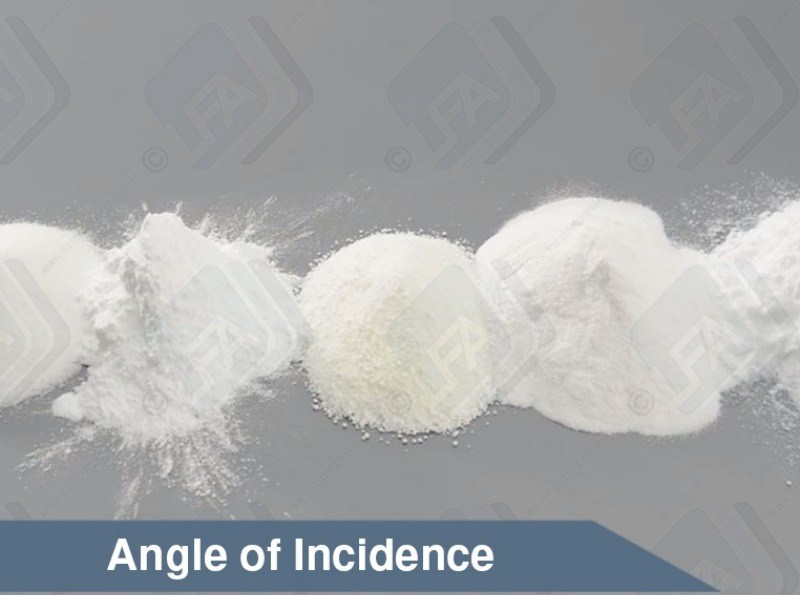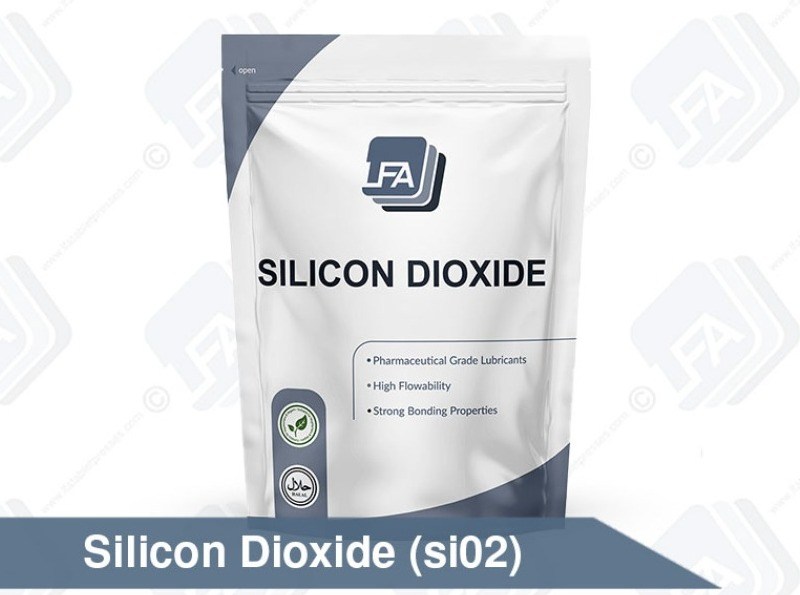Ditlenek krzemu
Ditlenek krzemu, znany również jako krzemionka, to substancja pomocnicza. Jest wielofunkcyjny i ułatwia proces produkcyjny. Ditlenek krzemu jest obojętny chemicznie. Oznacza to, że nie wchodzi w reakcje z innymi substancjami, których używasz, ani z substancjami w ciele. To ułatwia proces wytwórczy i trawienny. Ma wyższą temperaturę topnienia i wrzenia oraz nie jest rozpuszczalny w wodzie. Są klasy naturalne i syntetyczne, jednak wszystkie mają identyczny skład chemiczny. Często jest używany, ponieważ zwiększa płynność i zmniejsza osiadanie na częściach urządzenia.
Ditlenek krzemu pochłania wilgoć z otoczenia. Z tego powodu często używają go producenci kosmetyków i żywności. Te cechy są również pożądane przez firmy farmaceutyczne. Różne zalety współdziałają ze sobą umożliwiają łatwiejszy i płynniejszy proces produkcyjny.
Ditlenek krzemu cechuje wysoka porowatość, która pozwala na absorpcję do 300 g cieczy na 100 g krzemionki. To oznacza, że płynne składniki można z łatwością w swobodnie płynący proszek. Działa jako nawilżacz, substancja używana w mieszankach aby poprawić ich zdolność przepływu. Zapewnia, że produkt bez problemu przepływa przez urządzenie i nie przykleja się do części maszyn. Krzemionka zwiększa również stabilność podatnych na działanie wilgoci API. API to substancje czynne leków. Ta umiejętność zmniejsza śladowe ilości wilgoci, która może powodować psucie się urządzeń. Posiada wyjątkową możliwość pochłaniania wilgoci, co umożliwia szybką produkcję tabletek ze względu na odporność na przyleganie i przylepianie.
Ditlenek krzemu to ciekawy związek, występujący w dużych ilościach na Ziemi. Jest wszechobecny i tworzy 60% pokrywy ziemskiej i 93% znanych skał. Znany jest również jako kwarc. Jest obecny w naszych tkankach, roślinach i jedzeniu. Jego obecność jest konieczna do utrzymania zdrowych i silnych kości, skóry, włosów, zębów i paznokci. Jego niedobór może powodować złe formowanie kości, niezdrową skórę i zęby.
Ważne jest, aby odpowiednio obchodzić się z ditlenkiem krzemu. Przedłuży to jego przydatność do użycia oraz ochroni ludzi. Może drażnić oczy i skórę. Należy unikać jego inhalacji nosząc maseczkę podczas pracy z nim. Jeśli obchodzi się z nim prawidłowo, pozostanie w doskonałym stanie do momentu, gdy będzie trzeba go użyć.
Ditlenek krzemu to wielofunkcyjna i popularna substancja pomocnicza. Jest wydajny i ułatwia proces produkcyjny.
| Nazwa | Wartość |
|---|---|
| Numer CAS | 7631-86-9 |
| Formuła molekularna | 60,08 g/mol |
| Forma | Biały proszek |
| Stan fizyczny | Stały |
| Przechowywanie | Przechowywać w temperaturze pokojowej |
| Temperatura topnienia | 1,713Â °C |
| GÄ™stość | 2,648 (α-quartz) 2,196 (amorphous) g·cm−3 |
| Waga molekularna | 60,08 g/mol |
| Net Weight (kg) | 1.5 |
Yes, it does not matter what age, size or sex the person consuming the products is. It is, however, important to check the intolerance data.
Yes, all of the excipients are safe for human or animal consumption. There are some precautions that should be taken when handling them and there are some people that might have intolerances to some of them. Information on this can be found in the products MSDS and Intolerance Data Sheet. This can be found in this section for every excipient.
Yes, there are all of them can be found in the intolerance sheets for each product. The intolerance sheets can be found here: https://www.lfatabletpresses.com/product-data
FFFFFF Yes, we have bulk pricing for all of our excipients, and these can be found in this section. We offer bulk in 500 kg, 1 ton, 2 ton and 5 ton lots. The prices are set on these quantities as these are the amounts that will fit on pallets.
Yes. CoA stands for Certificate of Analysis this is also known some times as an MSDS (Material Safety Data Sheet) all of the information contained in a CoA is inside the MSDS for every LFA product which is emailed to you after purchase.
Yes. There are two things at play here. You can get hygroscopic and hydrophobic excipients. Hygroscopic means that they take on water quickly, while hydrophobic means that they repel water.
There are products know as supper disintegrants. These products help the breakdown of tablets. At the moment LFA does not sell any supper disintegrants.
Magnesium stearate is hydrophobic this means that it will slow the breakdown of a tablet.
However, it is used in such small amounts that most of the time it will not make a difference to our customer's products. If they would like to be sure then they should conduct what is known as a disintegration test.
Firmapress - 2 years form batch date.
Dextrose - 3 years from batch date.
Dicalcium Phosphate - 3 years from batch date.
Microcrystalline Cellulose -
Magnesium stearate -
Lactose - 2 years from batch date.
Silica Dioxide - 2 years from batch date.
here are 6 steps that should be followed as a general rule of thumb when cleaning contact surfaces that have come into contact with powders:
Dry Clean - First you need to remove as much of the dry powder as possible. You can do this using a hover/vacuum. Make sure that the vacuum you are using has a filter good enough to handle fine dust.
Wet Clean - Next you need to perform a wet clean. This can be done with warm water and soap or if available an ultrasonic cleaner.
Rinse - Next you need to rinse off any soap with potable water (drinking water). You do not have to do this if you used an ultrasonic cleaner in the last step. It is important to ensure that all parts are thoroughly dried immediately after washing to avoid any rusting.
Sanitise - Next you need to sanitise the surface. This step is recommended by the FDA. There are a number of sanitising solutions available designed to be applied and left on.
Lubricate - You now need to lubricate any parts that require it. This should be with the appropriate grade oil or grease considering your use and greasing chart. Store - Finally store any of the parts in a cool dry place. If you are storing them on the machine then make sure the machine is in a temperature controlled environment with low humidity.
Dextrose - approx 100 mesh
Dicalcium Phosphate - approx 100 mesh
Microcrystoline Cellulose - approx 120-200
Magnesium sterate -
Lactose - 80 mesh
Silica Dioxide -
Firmapress - 100-200 mesh
Dextrose - Sweetener, binding agent, good for chewable tablets or candy.
Microcrystalline Cellulose - Binder, filling agent. Good at binding tablets and making them bigger. It can also be used as a filler for capsules.
Magnesium stearate - Dry Lubricant. This stops products from getting stuck to the tooling. It can also help with powder flow issues and caking issues.
Lactose - Binder, sweetener and bulking agent. It has a large mesh so it flows well but most people do not like it because of the intolerance issues.
Silica Dioxide - Flowing agent. This assist powders in flowing smoothly through the machines. It also helps with cacking issues where powders get stuck to the machine.
Firmapress - 2 years form batch date.
Dextrose - 3 years from batch date.
Dicalcium Phosphate - 3 years from batch date.
Microcrystalline Cellulose -
Magnesium stearate -
Lactose - 2 years from batch date.
Silica Dioxide - 2 years from batch date.
If your product does not bind well then we would recommend using MCC. This can be used in any % the limiting factor is the size of the tablet.
If the amount of MCC you would have to use would be too much or if you do not want to use MCC then you have 3 other options: Ask your supplier for a directly compressible or tabletable grade of your product. Spray dry your product. Wet granulate your product.
If your product is sticky then you will need to add a dry lubricant to your mix. For this, we recommend magnesium stearate.
We do not recommend that you add more than 1% to the mix as more than this can cause capping. If your product is still sticky at this point then we would recommend looking into granulation.
If your product or API is clumpy then you will need to add an anticaking agent. For this, we recommend silicon dioxide. We only recommend adding a maximum of 2% of this to the mix








